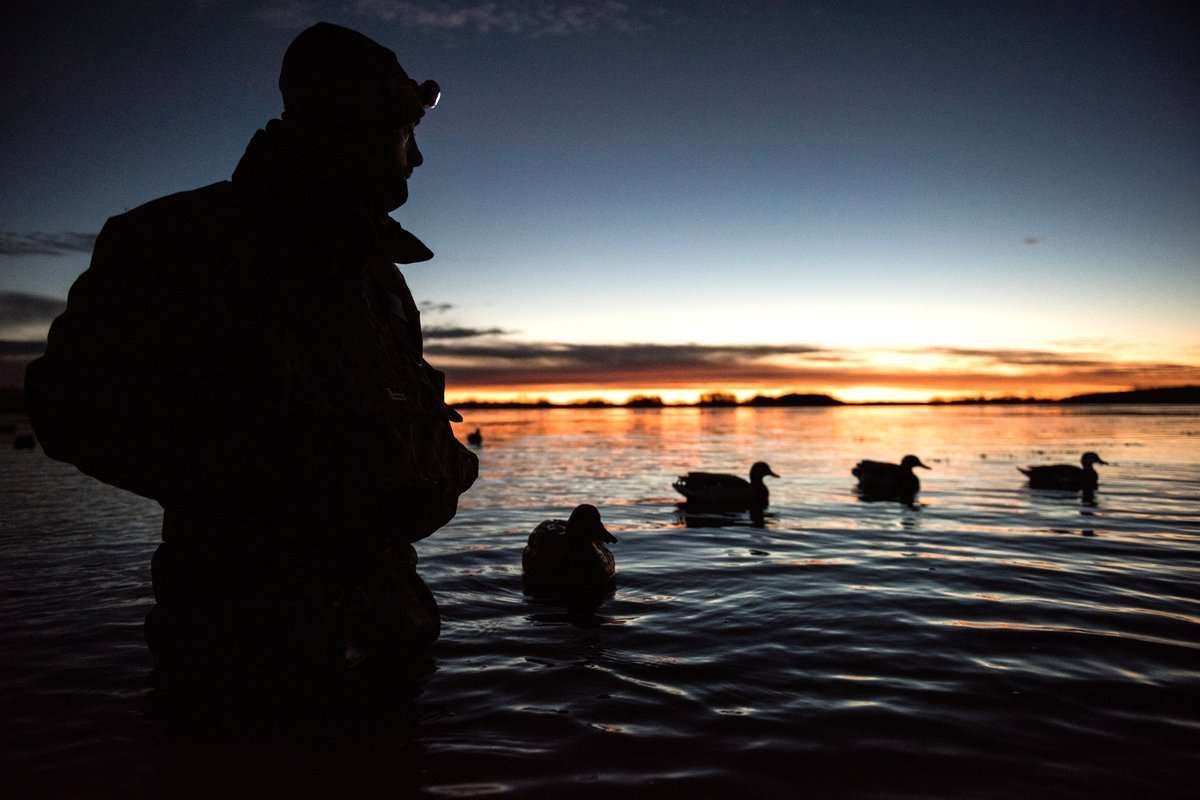Warm, Dry Weather Has Waterfowlers Frustrated
Date: Jan. 17
Location: Pacific Flyway, with emphasis on western Washington
Major Weather Trends
Let me put it this way. My wife, Julie, her brother and I raked three limits of steamer clams Jan. 12 on Willapa Bay. In T-shirts. And we were comfortable. Blue skies, little wind and 55 degrees; middle of January along the Washington coast. And that, folks, has been the story for the season — warm and no weather. We've seen a couple of frosty mornings at home and a bit of cool weather on the eastern side, but nothing to amount to anything. Rumor has it that with the pleasant conditions, the birds that should be in Washington — and Oregon and California — are still in southern Canada. I don't know that, but it's been mild weather-wise throughout the entire flyway this winter.

Water/Habitat Conditions
Same broken record. Sorry, folks. With the mild weather, there's been little to no rain all fall and winter. For 2018, southwestern Washington and northwestern Oregon finished with an almost 9-inch rainfall deficit, which, coincidentally, was about the shortage we finished with in 2017. A trend? Al Gore's global warming? I'm not sure, but I never thought I'd see a season during which there was no sheet water on the coastal farms I hunt. I saw it this year.
Geff Duncan, an Avery pro who lives in the Chehalis area to my north and east, had a bit of water on the ground, as evidenced by a trio of brief videos he sent me recently. Bill Saunders (billsaunderscalls.com) out of Washington's Tri-Cities has had water all season, thanks to the eastern side's irrigation system. Elsewhere, water hasn't seemed to be an issue. However, the lack of ducks, or at least mysteriously low numbers, appears to be a common denominator.
Species/Numbers
Ryan Carruthers, a California waterfowl biologist in the Sacramento Delta area, called a week or so ago, asking — hoping, actually — I had ducks, and that those birds would eventually make their way south to the valley. I felt terrible having to tell the young man I had nothing to send him. Nothing. In southwestern Washington, I'm seeing few pintails, wigeon and green-winged teal, which, for this time of year, is odd. A few mallards and a smattering of divers, too, but mostly, it's really nothing to get excited about.
Tony Miller, a hunting partner, travelled upriver on the Columbia the week of Jan. 7 and talked of greater numbers of birds — divers and puddlers. But again, it wasn't the numbers we'd expect this time to year. Western Washington saw a slight influx of tundra swans during the past week, and from what I've seen in recent days, a small push of lesser Canadas —signs that something might be imminent in terms of a late migration. Only time will tell.
Again from the Sacramento Delta, Carruthers told me the greenwings they'd seen in late November disappeared within days of their arrival.
I don't know where they went, he said.
And I couldn't help him. Mostly, and from what I'm told, it's the usual suspects in terms of species, albeit with slightly to dramatically fewer birds, depending on where you hunt.
Personal Hunting Report
Boy howdy, but it's been slow. Miller and I hunted geese about 30 minutes inland from the coast Jan. 13, killing three. But it took all morning — 8 a.m. to 1 p.m. — to do it, and those birds came out of the only small bunch that wanted anything to do with us. A few mallards, one high bunch of wigeon, and five — yes, five — bluebills made up our duck observations for the day, excluding the 50 or so common mergansers we saw. We witnessed no cacklers, which is strange, and only a handful of lesser. Most of the geese were small groups of Westerns, all of which knew where they were going. We heard very little shooting up and down the Columbia and only one volley within a mile or so of where we were set up. As I say, it's tough. Our goose season is closed until Feb. 9. Ducks will close Jan. 27.
Chatter/Upcoming Patterns/Hotspots
Sadly, as I write this, I'm about to spend the day helping to search for a 19-year-old duck hunter who has been missing since Jan. 12. I'm told the young man, along with his father and brother, were hunting the Lewis and Clark National Wildlife Refuge upriver from Astoria, Oregon. They separated, with the boy heading off in a small skiff to hunt on his own. After an hour or so, his father began to worry that the boy hadn't returned. A search turned up the boy's skiff, his PFD and cell phone, but no sign of the young hunter. The Coast Guard has been combing the area using infrared technology but hasn't discovered anything. Hopefully, he's just scared and awfully cold, and we'll find him, but it's a reminder that Mother Nature can be amazingly beautiful and incredibly cruel. Be safe out there.
Click here for more Realtree waterfowl hunting content. And check us out on Facebook.







